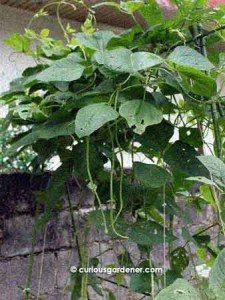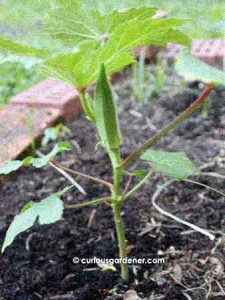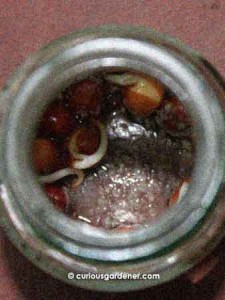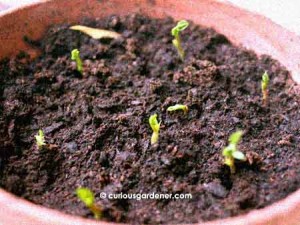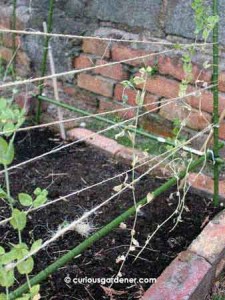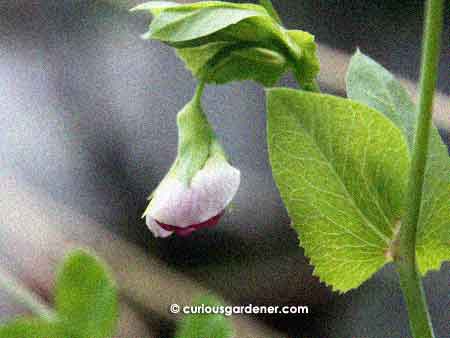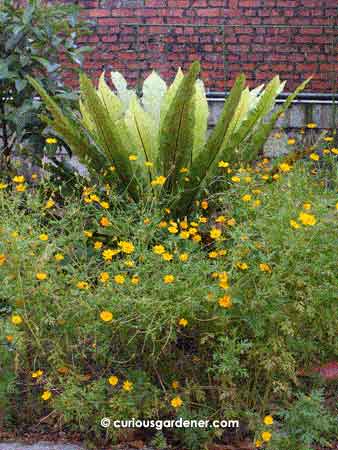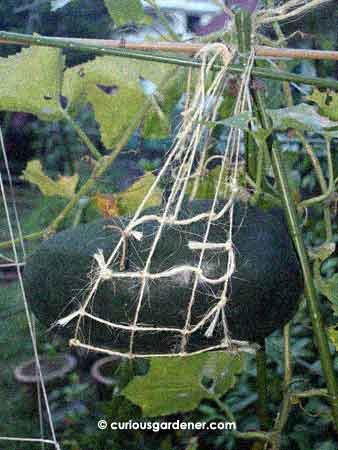
The first sweet pea pod won't reach its full potential as the plant is already withering in the heat.
Well, it looks like my experience growing sweet peas will end prematurely. While the first bean is forming at the peak of the plant, the base of the plant is withering away. I guess it really is too hot for them to grow here.
It also doesn’t help that we’re transitioning from the NE monsoon to the dry inter-monsoon period, so not only are the winds not carrying much moisture, they’re also stripping it away. I’ve been watering the plants between once to thrice a day, depending on the plants’ needs. It’s quite a hassle, and it’s discouraging me from starting new, delicate plants. So, the remainder of the sweet pea seeds will go into cold storage for now.
Our kiwano plant also bit the dust last month. The weather was alternately too rainy or too hot from December through January, and that could have stressed the plant too much. Alternately, it may not have liked the growing conditions where it was located. I shall have to try my luck again and put the plant in a different spot to see if it makes a difference.
In the meantime, some of our regular performers are stepping up to the stage. Okra and long beans are starting to form, and the 3 purple brinjal plants produced so many fruits that there were days when we were just sick of eating them!
The winged bean plant has gone quiet again, making me wonder if it is near the end of its life span. Actually, there are just two vines left. The others were either victims of our over-enthusiastic, sight-challenged gardeners, or died natural deaths.
A number of plants are being attacked by sap-sucking insects, especially the papaya trees, and brinjal and roselle plants. Mealybugs and whiteflies are definitely not on our list of favorite garden visitors! I suppose the weather is dry and they need to eat and breed – but why can’t they do that in someone else’s garden? ![]()
I don’t think I’ll be planting too many things now that the weather has become more hot and dry, because it’s already quite a hassle to make sure the current plants are hydrated as necessary. Veggies that have already proven their worth will be nurtured, though. Long beans, okra and brinjal plants have our thumbs-up, and will probably be grown here constantly.
Recent plant babies include the angled loofah, winged bean and green snake gourd vines – well, one of each, for now. My seeds may be losing their viability, or perhaps they are just waiting for the right conditions to grow. Who knows, maybe we will get some surprise sprouts sometime in the future, because I planted several seeds of each of the above-mentioned, and only got one of each. The angled loofah was the biggest surprise, because it germinated about 2 months after I had sowed it! So, perhaps the others will start growing at a later date. That would be nice.
For now, I’ll just refresh my memory about the possible upcoming weather and see what I should do next. That’s the beauty of gardening – things are constantly changing and growing. Happy gardening!
© 2012 curiousgardener.com All rights reserved.

